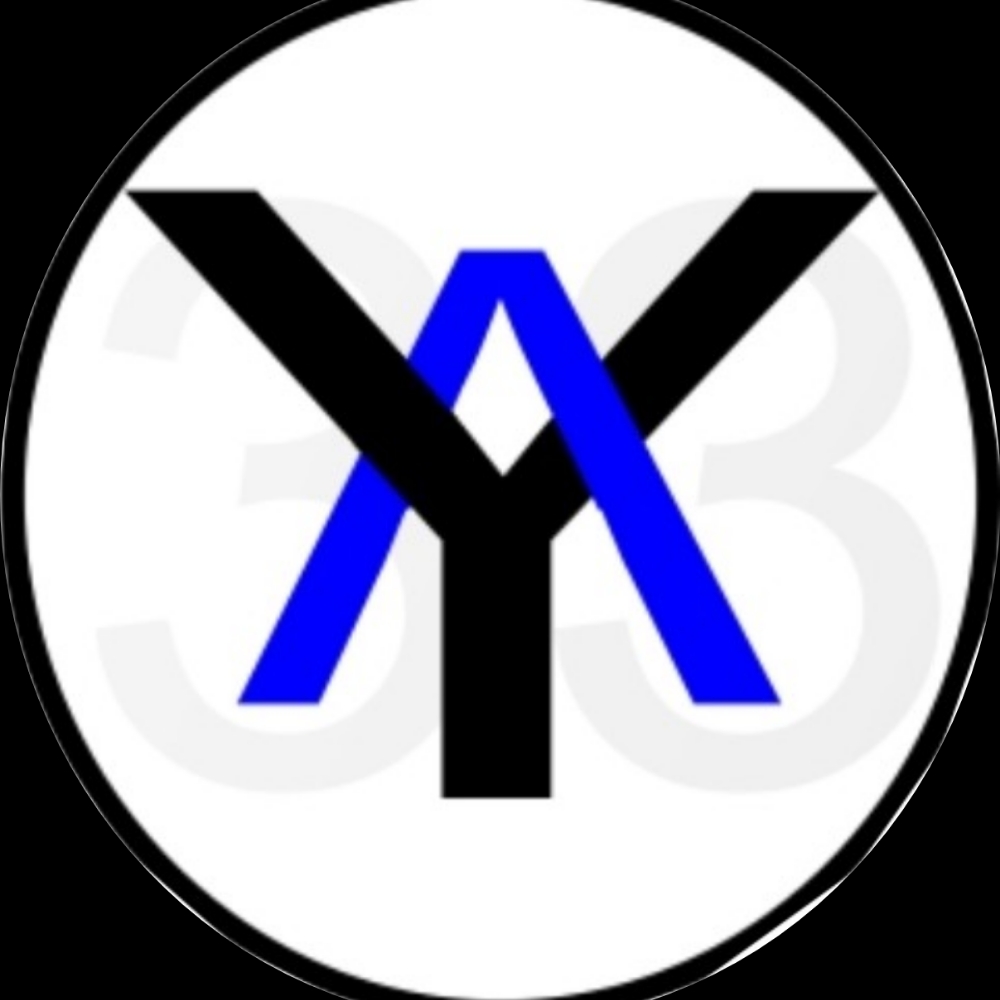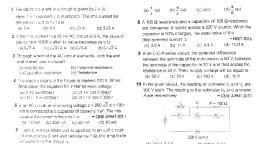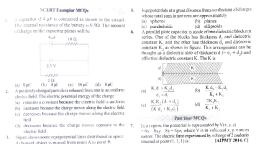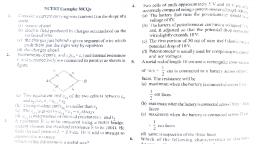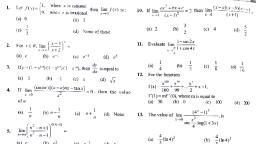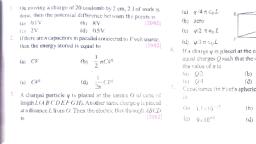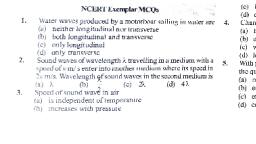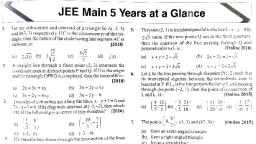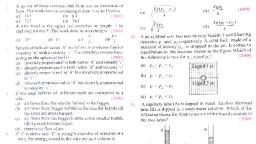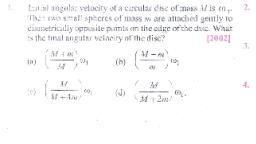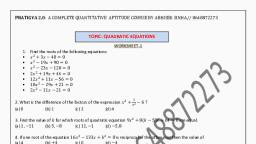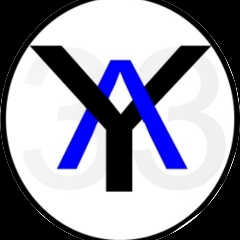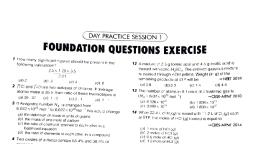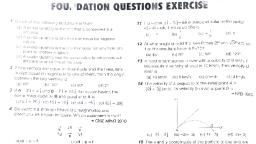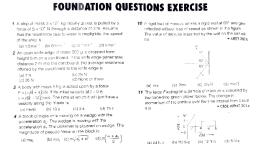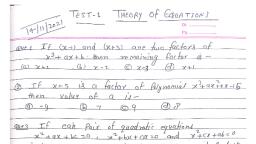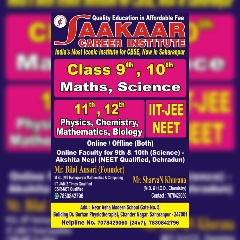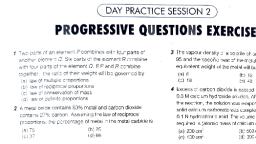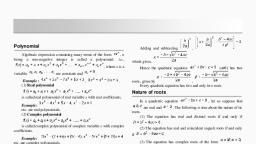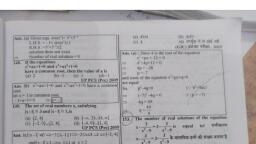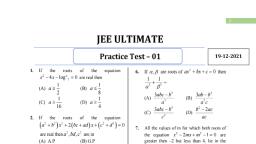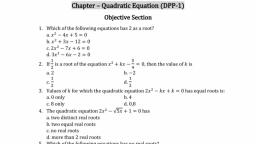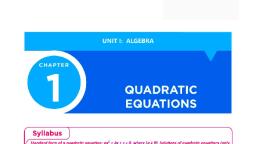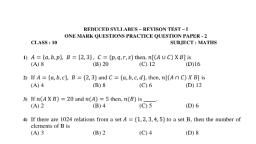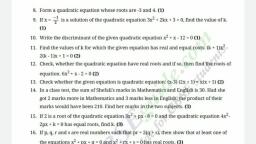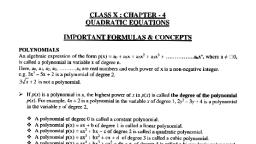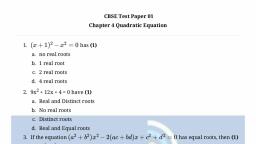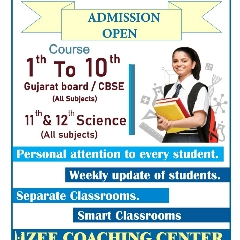Page 1 :
., , If t,m, n, , are, , real, (*m, then the roots by the equation:, , (-mr-5(l+m)r-2((-m)=0are, (a) Real and equal, (c) Real and unequal, 2., , (1979), , (6) Complex, (d) None of these., , Thecquation.x+2y+2:=1and 2r+4y+ 4: 9 have, (1979), (a) Only one solution, b) Only two solutions, (c) Infinite number of solutions, (d) None of these., , 3., , Ifx.y andzare real and different and, , (1979), , 4+4+95-6y:-32r-2ry, then u is always, , (a)non, negative, (c) non positive, 4, , (d) none of these, , Leta > 0 , b 0 and c > 0. Then the roots of the equation, , ar+bx +c=0, (a) are real and negative, S., , (b) zero, , (1979), (b) have negative real parts, , (c) both (a) and (b), (d) none of these, Both the roots of the equation, , (r-b) (r-c)+(*-a)(r-c)+(x-a)(x-b)=0arealways, )positive, (c) negative, 6., 6., , (1980), , (d)none ofthese., , Theleast value of the expression2 lo81o- lo8,(0.01), for, x>1,is, , (a) 10, (c)-0.001, , 7., , b) real, , (1980), , b), (d), , 2, none of these., , Ifr+px+ 1)is a factor of(ar+bx+c), then, (a) a+d=-ab, , (c)-2= ab, , (6) a-c= - ab, (d), , none of these, , (1980)
Page 2 :
The number of real solutions of thc cquation, , P-3x|+2=0is, , 18., , (1982-2 Marks), , (a), , 4, (b) 1, (c) 3, (d) 2, Two towns A and B are 60 km apart. A school is to be built to, town, scrve, town If, the total distance to be travelled by all 200 studcnis is to be, , 150 students in, , Aand 50 students in, , B., , a), 10., , (b), , town B, , a), 19., , 20., , 13., , (b) 0<x<, , (c) -100* 100, , (d)-0<x<o, has, (6), , two cqual roots, Ifa+b+cd-1, then ab, , L, (a), , 22., , (d), , (1984-2 Marks, , bc, , one rot, , + ca, , liesin the interval, , 15, , (6) 9, , 24., , (20005), , where, c e0cb, then, (a) 0ca<p, , (b) a<0<ß<|a, , (c)a<p<0, , (d) a<0«|al<ß, , Ifa, b, c, d are positive rcal numbers such that, a+btc+d=2, then M=(a+ b)(c+d) satisfies the relation, , (c), 25., , (b) 1sMs2, (d) 3sMs4, , 15. If a and ß are the roots of+px+q=0 and a.p°are the, roots ofr-n+s=0, then, , thecquation-4gx+2g-r=0, , (c) both roots in (b, +o), (d) onc root in (-o, a) and the other in (b, +o), 26., , (1989-2 Marks), , has always, , (a) two real roots, (b) two positive roots, , 27., , two negative roots, , (d), , one positive and one negative roo, , be, , cquation 3r*px +3 =0,p>0, ifone ofthe root is, (6), , l f a a 2 , are posithve real numbers wh0se product isa, a,ta, , Let, a, b, real mumbers, 0. f a, ar+bx+c=0. B is, a, , (b) (*l)lin, is, , a, , root of, , 0a<B,then the equation a-r + 2bx+2c =0 has a root y, that always satisfies, , (20025), , . . * t 2 a , is, , 28., , (C) 2nc, Thest ofall real, , the root of a'*- bx-c =0 and, (1989-2 Marks), , (d) (+N2c), , numbersx which-x+2]+*>0,is, (2002s), for, , --2)u2-), (o)--)u), , (6) y a, (d) a<y<B, 17. The number of solutions of the equation sin(ey=S7+5is, C), , (2000S), , (d) 2/3, , (c)3, , fixod number c, then the minimum value of, , (c), , c, , For the, square of the other, then p is cqual to, , (a), , Qucstion has more than onc correct option., 16., , Iba,then the cquation (r-a(r-b)-I = Ohas (20005), , (6) both roots in (-o,a), , (b) (1,2), (d) nonc of these, , (c)(-2,-1), , 2sMs3, , (2000S), , (a)both rools in (a, b), , (1985-2 Marks), (a) (2, o), , (d)8, , (b) 2 s a S3, , a<2, , (a)0sM s1, Iflogx-1)<log,osr- D, then x lies in the interval-, , (1994), , (c)7, , (c) 3<aS4, ) a>4, 23. fa and B a<)are the roos ofthe cquation.x'* b *c0, , (1984-2 Marks), , 14., , nopandr, , p.qe{l, 2,3, 4). The number of cquations of the form, , Ifthe rools of the cquation r-2ar+a+a-3 =0 are real, and less than 3, then, (1999-2 Marks), a), , (d) infinitcly many roots, +, , (1994), , p+r+1=0 having real roots is, , for whichr2-x+*-x+1>0is, (1982-2 Marks), , Toot, , (d), , Ifp.q.rare +ve and are in A.P, the rools of quadratic cquation, , () allp andr, 21., , (a)-4xs0, , a), (C), , (6), , (1994), 2, , (a), , ()max, (p.9)<min(p.q.rn, (d) none of these, , 12. The equation, , () 0, , c), , pr+qx+r=0 are all real for, , max (p.9)< max (p, 4.), , The largest interval, , 4,C, , y=2 sinr and y= sx* +2x+3 is, , tb) min .9)~{p*a-lp-), , 1., , b,C, , d) a+c,b+c, a,b, The number of points of intersection ol two curves, C), , (d) 45 km fom town B, ), townA, Ifp,4. rare any real numbers, then, (1982-2 Marks), , (a), , (1992- 2 Marks), , (r-a)(r-B)+c=0arcc, , as small as possible, then the school should be built at, , (1982-2 Marks), 45 km fom town A, , Let a, B be the roots of the cquation (r-a) (r-5)=c,c*0., Then the roots of the cquation, , Y, , a), , (b) 1, , 1990- 2 Marks), , (C)2, , (d) Infinitely many, , 29. If a el0., , then vax*, , than or equal to, (a) 2 tana (b) 1, , is always greater, c) 2, , (d), , (20035), , seca
